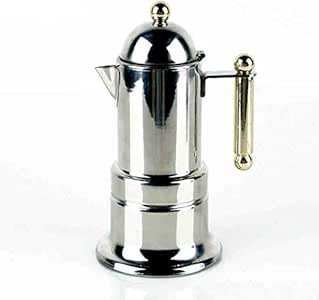The aroma of freshly pulled espresso, once the exclusive domain of bustling cafes, now fills countless homes thanks to the evolution of home espresso makers. No longer a niche pursuit for coffee aficionados, crafting cafe-quality espresso at home has become increasingly accessible and popular, dramatically transforming our relationship with coffee culture. This shift is fueled by technological advancements, a growing appreciation for specialty coffee, and a desire for control and customization in our daily routines. But how have these machines revolutionized our home coffee experience, and what should you consider when choosing one?
From Stovetop to Super-Automatic: A Journey Through Espresso Machine Evolution

The journey of the home espresso machine is a fascinating one. Early models, often relying on stovetop brewing methods, produced a far cry from the rich crema and nuanced flavors we expect today. These rudimentary machines laid the foundation, however, paving the way for more sophisticated designs. The introduction of pump-driven machines marked a significant leap forward, providing consistent pressure for optimal extraction. Further advancements brought features like thermoblock heating systems for faster heat-up times and temperature stability, and programmable settings for personalized brewing parameters. Today, we have a spectrum of choices, from manual lever machines that demand skill and precision, to fully automatic super-automatic machines that handle the entire process with the press of a button.
Understanding the Heart of the Machine: The Pump and its Torque
The pump is the engine of an espresso machine, responsible for delivering the high pressure (typically 9 bars) needed to force hot water through the finely-ground coffee puck. The pump’s torque is crucial. Torque refers to the rotational force the pump generates. Higher torque ensures consistent pressure throughout the extraction process, even when dealing with resistant coffee grounds or a partially clogged portafilter. Inconsistent pressure leads to uneven extraction, resulting in a bitter or sour espresso lacking the desirable crema and balanced flavor profile. A low torque pump might struggle to maintain pressure, leading to a weak and underwhelming shot.
Choosing a machine with sufficient torque is therefore paramount. Look for specifications outlining the pump’s pressure and its ability to maintain consistent pressure under load. While manufacturers rarely explicitly state torque values, consistent pressure ratings are a strong indicator of adequate pump performance.
Engine Options: Vibratory vs. Rotary Pumps

Espresso machines typically utilize two types of pumps: vibratory and rotary. Vibratory pumps are smaller, quieter, and generally less expensive. However, they may struggle to maintain consistent pressure at high demands. Rotary pumps, on the other hand, offer superior pressure stability and are favored by those seeking professional-level performance. While initially more expensive, they offer a long-term benefit in terms of consistency and lifespan.
Beyond the Pump: Factors Influencing Espresso Quality
While the pump is critical, the quality of your espresso is also influenced by other factors. These include the quality of the grinder (a crucial component often overlooked), the freshness of the beans, the skill of the barista (that’s you!), and the machine’s overall design. Features like PID temperature control (precise temperature regulation) and pre-infusion (a slow pre-soaking of the grounds) contribute significantly to achieving that perfect shot. Consider these elements alongside the pump’s capabilities when making your selection.
Comparing the Contenders: Popular Espresso Machine Types

The market offers a vast range of espresso machines, from budget-friendly options to high-end professional models. Let’s look at some popular categories:
- Manual Lever Machines: These require significant skill and offer the most control over the brewing process, allowing experienced baristas to fine-tune every aspect. They are typically more expensive and time-consuming.
- Semi-Automatic Machines: These machines handle most of the process, but the user still controls the extraction time. They offer a balance of control and convenience.
- Super-Automatic Machines: These machines automate virtually every step, from grinding to dispensing the espresso. They are the most user-friendly but offer the least control.
Consider your skill level, budget, and desired level of control when choosing between these types.
Practical Advice for Home Baristas

Once you’ve chosen your espresso machine, here’s some practical advice to help you brew like a pro:
- Invest in a quality grinder: A good grinder is as important as the machine itself. It ensures even particle size for consistent extraction.
- Use fresh, high-quality beans: The quality of your beans will directly impact the taste of your espresso.
- Master the art of tamping: Consistent tamping pressure is crucial for even extraction.
- Experiment with grind size and extraction time: Fine-tune these variables to achieve your preferred taste.
- Clean and maintain your machine regularly: Regular cleaning ensures the longevity and performance of your espresso machine.
Conclusion: The Espresso Revolution at Home
Home espresso makers have undeniably transformed coffee culture at home. The availability of a wider range of machines, coupled with increased knowledge and appreciation for specialty coffee, has empowered home baristas to create truly exceptional espresso. The journey from basic stovetop models to sophisticated super-automatic machines is a testament to technological advancement and our ever-growing desire for a perfect cup of coffee. By understanding the key features, especially the importance of pump torque, and investing in a machine that fits your needs and skill level, you can embark on a rewarding and delicious espresso adventure right in your kitchen.


